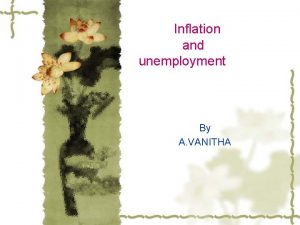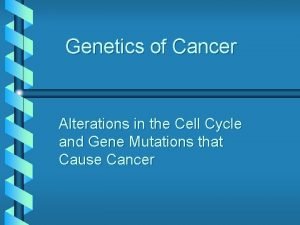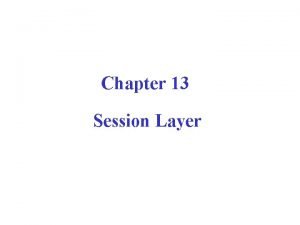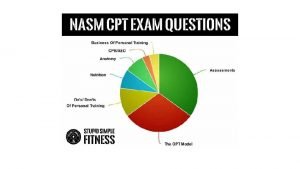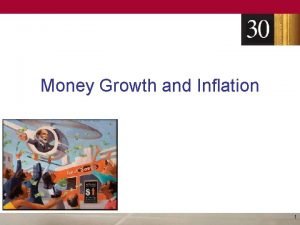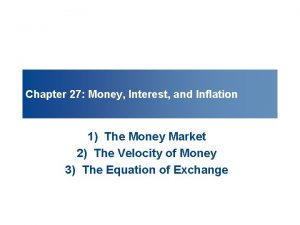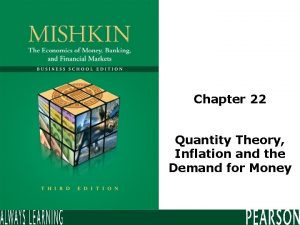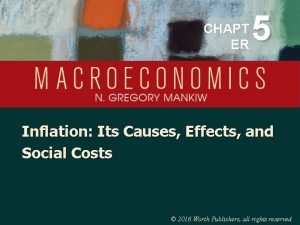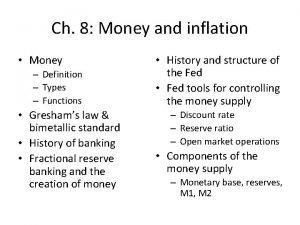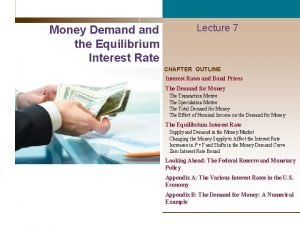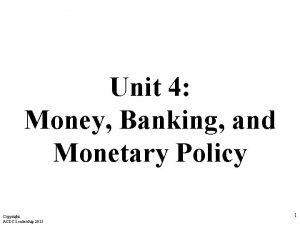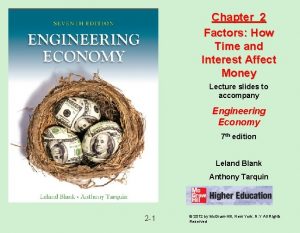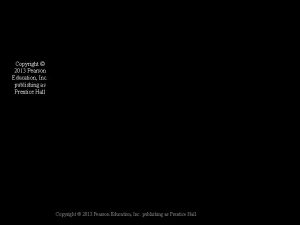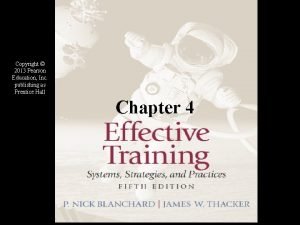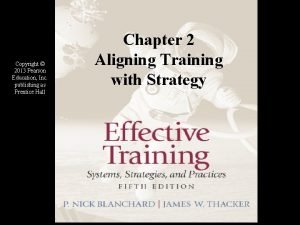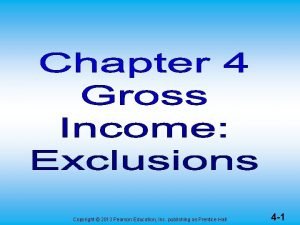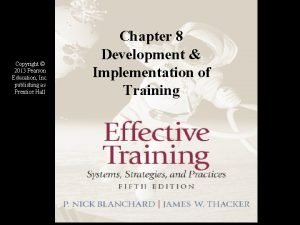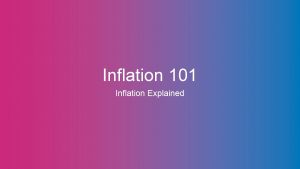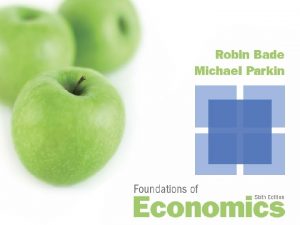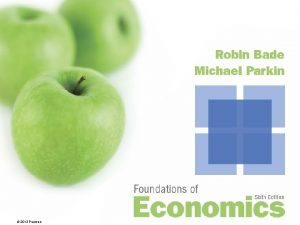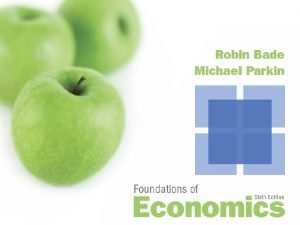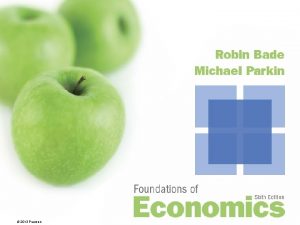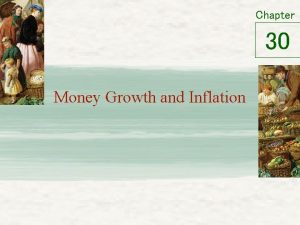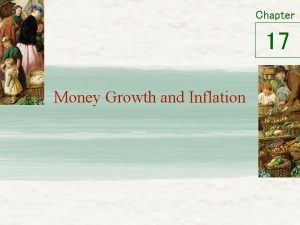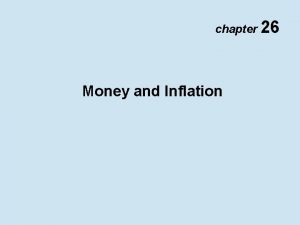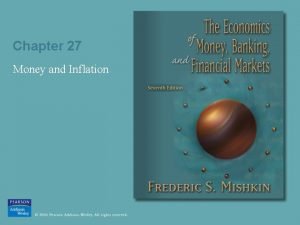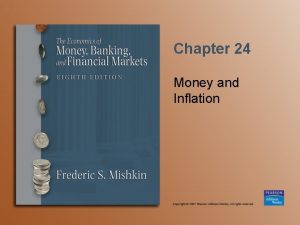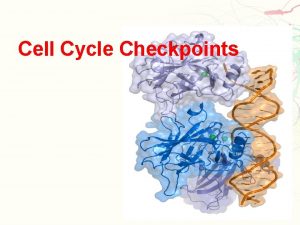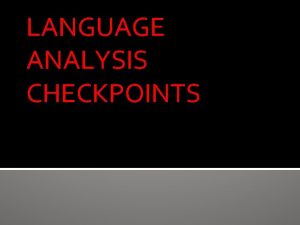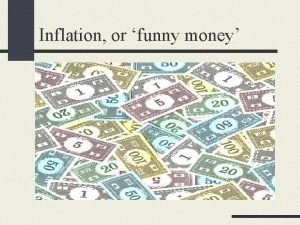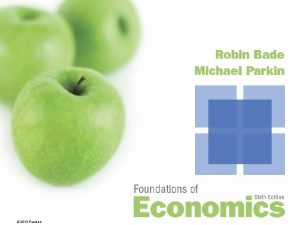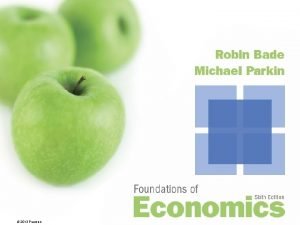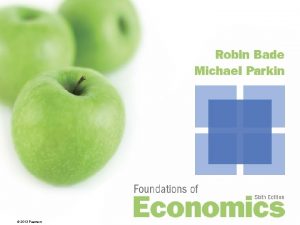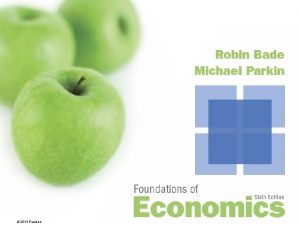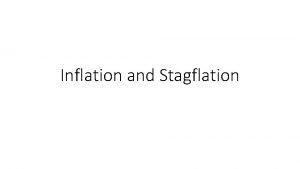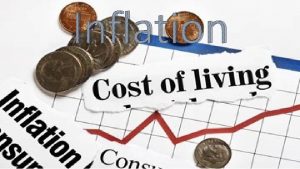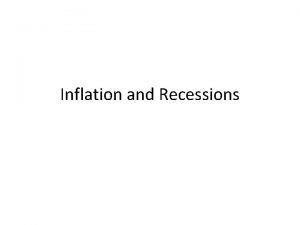2013 Pearson Money Interest and Inflation 28 CHECKPOINTS


























- Slides: 26

© 2013 Pearson

Money, Interest, and Inflation 28 CHECKPOINTS © 2013 Pearson

Click on the button to go to the problem Checkpoint 28. 1 Checkpoint 28. 2 Checkpoint 28. 3 Problem 1 Problem 2 Problem 3 Problem 4 In the news © 2013 Pearson

CHECKPOINT 28. 1 Practice Problem 1 The figure shows the demand for money curve. If the quantity of money is $4 trillion, what is the supply of money and the nominal interest rate? © 2013 Pearson

CHECKPOINT 28. 1 Solution The supply of money is the curve MS. The interest rate is 4 percent a year, at the intersection of MD 1 and MS. © 2013 Pearson

CHECKPOINT 28. 1 Practice Problem 2 The figure shows the demand for money curve. If the quantity of money is $4 trillion and real GDP increases, how will the interest rate change? Explain the process that brings about the change in the interest rate. © 2013 Pearson

CHECKPOINT 28. 1 Solution An increase in real GDP increases the demand for money. The demand for money curve shifts rightward from MD 1 to MD 2. At an interest rate of 4 percent a year, people want to hold more money, so they sell bonds. As the supply of bonds increases, the price of a bond falls and the interest rate rises. © 2013 Pearson

CHECKPOINT 28. 1 Practice Problem 3 If the Fed decreases the quantity of money from $4. 0 trillion to $3. 9 trillion, how will bond prices change? Why? © 2013 Pearson

CHECKPOINT 28. 1 Solution At an interest rate of 4 percent a year, people would like to hold $4. 0 trillion. With only $3. 9 trillion of money available, people are holding only $3. 9 trillion of money, so they sell some bonds. As the supply of bonds increases, the price of a bond falls, and the interest rate rises. © 2013 Pearson

CHECKPOINT 28. 1 Practice Problem 4 If banks increase the interest rate they pay on deposits, how will the demand for money and the nominal interest rate change? © 2013 Pearson

CHECKPOINT 28. 1 Solution The higher interest rate on bank deposits lowers the opportunity cost of holding money, so the demand for money increases. As the demand for money increases, with no change in the supply of money, the nominal interest rate in the money market will rise. © 2013 Pearson

CHECKPOINT 28. 1 In the news What to do with $50, 000 now A good strategy: Put about two-thirds of the money into bonds of developed nations and put the rest into a riskier emerging market bond fund. Source: CNNMoney. com What is the opportunity cost of holding money? If lots of people followed this advice and put their money into bonds, how will the demand for money and the interest rate change? © 2013 Pearson

CHECKPOINT 28. 1 Solution The opportunity cost of holding money is the highest interest rate forgone by not holding bonds. As lots of people decide to buy bonds, the demand for money decreases. The decrease in the demand for money, with no change in the supply of money, lower the interest rate on bonds. © 2013 Pearson

CHECKPOINT 28. 2 Practice Problem 1 Use the data in the table to calculate the real interest rate. If the real interest rate remains unchanged when the inflation rate increases to 4 percent a year and then remains constant, explain how the nominal interest rate changes in the long run. © 2013 Pearson In 1999, the Canadian economy at full employment. • Real GDP was $886 billion. • The nominal interest rate was around 6 percent per year. • The inflation rate was 2 percent a year. • The price level was 1. 1. • The velocity of circulation was constant at 10.

CHECKPOINT 28. 2 Solution The real interest rate equals the nominal interest rate minus the inflation rate. In 1999, the Canadian economy at full employment. Real interest rate = (6 2) percent a year = 4 percent a year. • The nominal interest rate was The nominal interest rate rises from 6 percent a year to 8 percent a year. • The price level was 1. 1. © 2013 Pearson • Real GDP was $886 billion. around 6 percent per year. • The inflation rate was 2 percent a year. • The velocity of circulation was constant at 10.

CHECKPOINT 28. 2 Practice Problem 2 Use the data in the table to calculate the quantity of money in Canada. In 1999, the Canadian economy at full employment. • Real GDP was $886 billion. • The nominal interest rate was around 6 percent per year. • The inflation rate was 2 percent a year. • The price level was 1. 1. • The velocity of circulation was constant at 10. © 2013 Pearson

CHECKPOINT 28. 2 Solution Velocity of circulation (V) equals Nominal GDP (P x Y) divided by Quantity of Money (M). Rewrite this equation as: M = (P x Y) ÷ V. (P x Y) = $866 billion × 1. 1 = $975 billion, so M = $975 billion ÷ 10 = $97. 5 billion. © 2013 Pearson In 1999, the Canadian economy at full employment. • Real GDP was $886 billion. • The nominal interest rate was around 6 percent per year. • The inflation rate was 2 percent a year. • The price level was 1. 1. • The velocity of circulation was constant at 10.

CHECKPOINT 28. 2 Practice Problem 3 Use the data in the table. If the quantity of money in Canada grows at 10 percent a year and potential GDP grows at 3 percent a year, what is the inflation rate in the long run? In 1999, the Canadian economy at full employment. • Real GDP was $886 billion. • The nominal interest rate was around 6 percent per year. • The inflation rate was 2 percent a year. • The price level was 1. 1. • The velocity of circulation was constant at 10. © 2013 Pearson

CHECKPOINT 28. 2 Solution With velocity constant, velocity growth is zero. So in the long run, Inflation rate equals Money growth rate minus Real GDP growth rate. Inflation rate = 10 percent a year minus 3 percent a year, which is 7 percent a year. © 2013 Pearson In 1999, the Canadian economy at full employment. • Real GDP was $886 billion. • The nominal interest rate was around 6 percent per year. • The inflation rate was 2 percent a year. • The price level was 1. 1. • The velocity of circulation was constant at 10.

CHECKPOINT 28. 2 In the news “The U. S. can pay any debt because we can always print more money. ” Source: Meet the Press, August 7, 2011 Explain why “always printing money” will “pay off the debt. ” © 2013 Pearson

CHECKPOINT 28. 2 Solution “Printing money” means the Fed increases the quantity of money by buying government bonds. This transaction doesn’t “pay off the debt. ” It merely transfers the debt to the Fed. But at full employment and a given velocity of circulation, when the Fed increases the quantity of money, the price level rises (the quantity theory of money). The higher price level lowers the real value of the debt. That is how “printing money” ends up “paying off the debt. ” © 2013 Pearson

CHECKPOINT 28. 3 Practice Problem 1 Ben has $1, 000 in his savings account and the bank pays an interest rate of 5 percent a year. The inflation rate is 3 percent a year. The government taxes the interest that Ben earns on his deposit at 20 percent. Calculate the after-tax nominal interest rate and the after-tx real interest rate that Ben earns. © 2013 Pearson

CHECKPOINT 28. 3 Solution Ben’s interest income equals 5 percent of $1, 000, which is $50. The government takes $10 of his $50 in tax, so the interest income he earns after tax is $40. The nominal after-tax interest rate is ($40 ÷ $1, 000) × 100, which equals 4 percent a year. © 2013 Pearson

CHECKPOINT 28. 3 The after-tax real interest rate equals the after-tax nominal interest rate minus the inflation rate. The after-tax nominal interest rate is 4 percent a year. So the after-tax real interest rate equals 4 percent a year minus the inflation rate of 3 percent a year, which is 1 percent a year. © 2013 Pearson

CHECKPOINT 28. 3 Practice Problem 2 Inflation-adjusted savings bonds hit 0% rate Inflation-adjusted savings bonds purchased from May through October 2009 will earn 0% for the first six months. The fixed interest rate on these bonds is 0. 1% and over the previous 6 months, inflation fell at an annual rate of 5. 56%. The minimum interest rate on savings bonds is set at 0%. Source: USA Today, May 5, 2009 Are these savings bonds a better deal than cash under the mattress? © 2013 Pearson

CHECKPOINT 28. 3 Solution At 0 percent interest rate, these bonds are just as good a deal as cash under the mattress. But if inflation starts to rise as the economy recovers from recession, the nominal interest rate will exceed 0. 1 percent. The real interest rate will be certain and equal 0. 1 percent a year—a better deal than cash. © 2013 Pearson
 Dana damian
Dana damian Types of unemployments
Types of unemployments Chapter 30 money growth and inflation
Chapter 30 money growth and inflation Dynamic postural assessment
Dynamic postural assessment Checkpoints in the cell cycle
Checkpoints in the cell cycle Dialogue control in session layer
Dialogue control in session layer Pronation distortion syndrome
Pronation distortion syndrome Homochromatin
Homochromatin Heighten salience of goals and objectives
Heighten salience of goals and objectives Quantity theory of money inflation
Quantity theory of money inflation Velocity of money
Velocity of money Quantity theory of money inflation
Quantity theory of money inflation Quantity theory of money inflation
Quantity theory of money inflation 8 money types
8 money types Quantity theory of money equation
Quantity theory of money equation Real vs nominal interest rate
Real vs nominal interest rate Simple interest
Simple interest Money demand and interest rate
Money demand and interest rate Decreasing money supply
Decreasing money supply How time and interest affect money
How time and interest affect money 2013 pearson education inc
2013 pearson education inc 2013 pearson education inc
2013 pearson education inc 2013 pearson education inc
2013 pearson education inc 2013 pearson education inc
2013 pearson education inc 2013 pearson education inc
2013 pearson education inc 2013 pearson education inc
2013 pearson education inc 2013 pearson education inc
2013 pearson education inc

